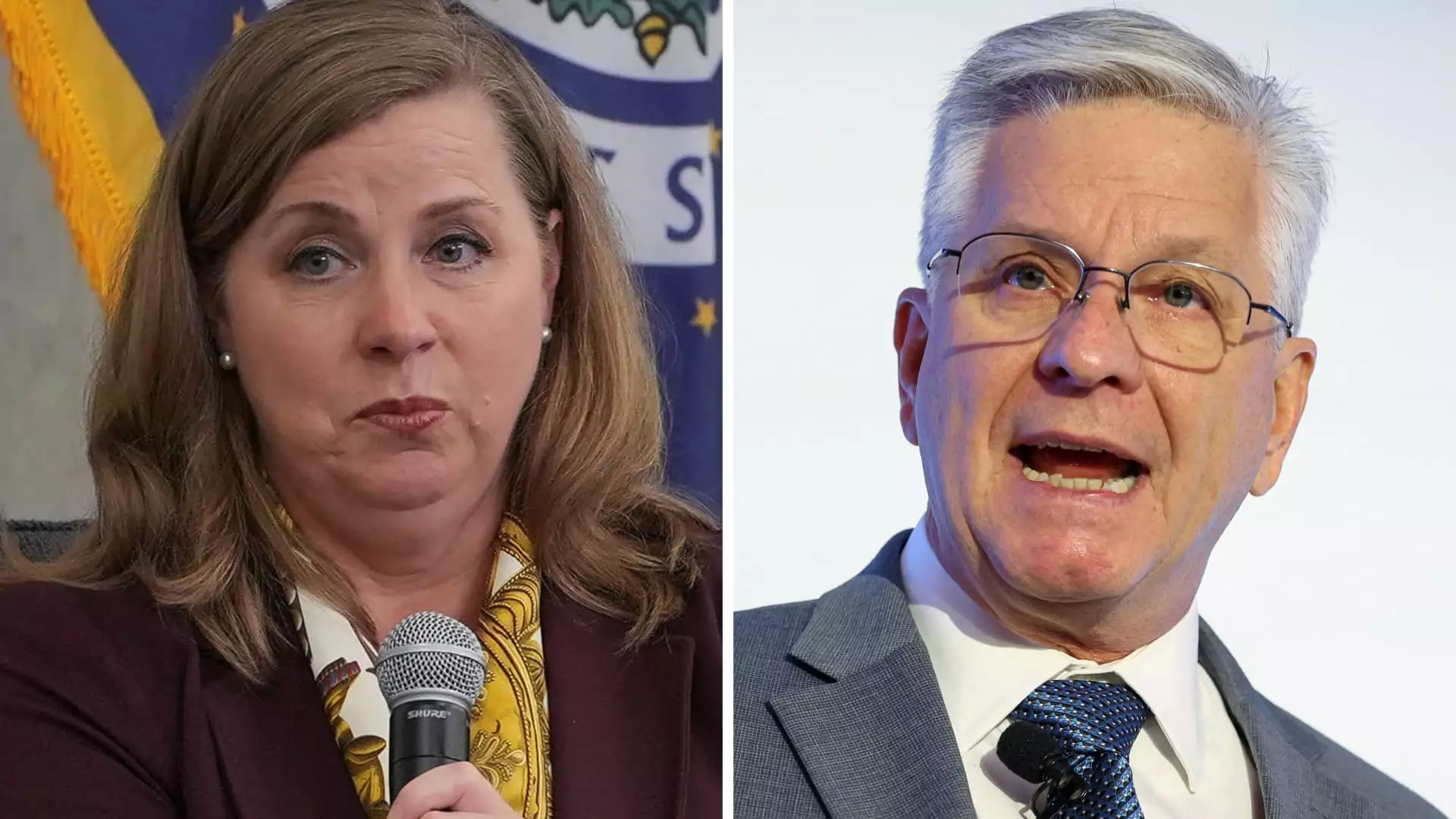In the intricate realm of economic stewardship, the Federal Reserve’s recent decision to maintain interest rates has sparked an unprecedented split among its governors. While the majority persists in cautious patience, two influential voices, Christopher Waller and Michelle Bowman, have openly diverged, warning that the delay in easing monetary policy could have profound repercussions on the labor market and overall economic vitality. Their dissent, rare in modern Fed history, underscores a fundamental debate about the timing of stimulus and the risks of over-caution in a fragile economic environment.
This disagreement exposes a vital truth often overlooked: prudence in monetary policy cannot be static. The broader economy is a complex, dynamic system that demands agility. Waller and Bowman convincingly argue that waiting for definitive signs before loosening policy—especially when inflation from tariffs remains subdued—is a misstep. Their stance advocates first and foremost for proactive intervention, aligning with principles of prudent economic management rooted in the recognition that delays tend to magnify risks over time.
The backdrop of their dissent—an underwhelming jobs report and revised downward employment figures—amplifies their concerns. It suggests that sectors vital to economic health are already experiencing signs of stagnation. If the Fed’s leadership refuses to act swiftly, it risks allowing a downturn to deepen, ultimately harming Americans’ job prospects and economic security. Their assessment emphasizes that monetary policy needs to be forward-looking, not overly reliant on lagging indicators that could mislead policymakers into complacency.
Tariffs, Inflation, and the Power of Perspective
A significant dimension in the debate lies in the impact of tariffs. Waller and Bowman see tariffs as having only a temporary inflationary effect, believing that inflation pressures are manageable and unlikely to require drastic rate hikes. They contend that current inflation levels do not justify a wait-and-see stance, especially given the potential for tariffs to fade as a destabilizing influence.
This perspective challenges the narrative pushed by political figures, including President Trump, who have loudly demanded aggressive rate cuts to counter perceived economic slowdown. Trump’s call for massive rate reductions—up to three percentage points—echoes a desire for swift, decisive action rooted in market confidence. However, Waller’s and Bowman’s approach favors measured, gradual policy easing—around 1.5 percentage points—arguing that a cautious and steady approach mitigates the risk of overshooting, which could ignite inflationary spirals or destabilize markets.
Their stance underscores a fundamental conservative principle: the importance of balancing risk and avoiding reckless moves based solely on political pressure. The Fed’s credibility depends on its ability to remain apolitical, data-driven, and deliberate. Their call for patience reveals faith in the resilience of markets and the economy’s capacity to absorb modest stimulus, avoiding the pitfalls of overcorrection that could damage confidence and stability.
The Political Tug-of-War and the Danger of Populist Pressure
The fierce criticism from Trump illustrates the ongoing politicization of the Federal Reserve. While some see the Fed’s independence as a safeguard, others view it as an obstacle to immediate political objectives. Trump’s impassioned calls for rate cuts reflect a populist impatience with the slow pace of policy easing—a desire driven more by partisan rhetoric than economic fundamentals.
However, this external pressure ignores the long-term risks of hasty monetary easing. An overly aggressive reduction in interest rates could foster asset bubbles, inflating markets beyond sustainable levels. It could also undermine the Fed’s credibility as an independent institution capable of making tough decisions free from political interference. The risk is that short-term political gains—such as appeasing voters or financial markets—may come at the expense of financial stability and economic health.
Yet, this controversy reveals a deeper problem: an erosion of trust in institutional expertise. Policymakers and economic leaders must resist populist temptations, recognizing that sound monetary policy must be rooted in facts, data, and a clear-eyed assessment of risks. Insisting on transparency and discipline, rather than succumbing to political pressure, is essential for safeguarding long-term prosperity.
The Central Question: Is Patience a Virtue or a Vice?
In today’s complex economic landscape, the debate boils down to a fundamental question: should the Fed act preemptively or wait for clearer signals? The cautious majority argues that patience is prudent, given the uncertainties surrounding inflation and global economic conditions. Conversely, Waller and Bowman warn that this patience may morph into perilous procrastination, risking the labor market’s deterioration and undermining the recovery.
One must ask whether the prevailing conservative stance aligns with the broader needs of a resilient economy or whether it merely embodies a conservative aversion to risk. The evidence suggests that inaction during periods of tepid growth could foster stagnation, while timely easing could preserve momentum and support employment. Their dissent advocates for a middle ground—gradual rate reductions that avoid the extremes of overreaction or complacency.
In the end, the choices the Fed makes today will define the economic landscape of tomorrow. The challenge lies in discerning when cautiousness turns into complacency and recognizing that, at times, boldness is the most responsible course. The lessons from recent months indicate that waiting too long may diminish the policies’ effectiveness, leaving policymakers scrambling to catch up when crises loom on the horizon. Balancing prudence with decisiveness is the tightrope walk of effective central banking—one that demands leadership, courage, and an honest appraisal of risks beyond political expediency.

